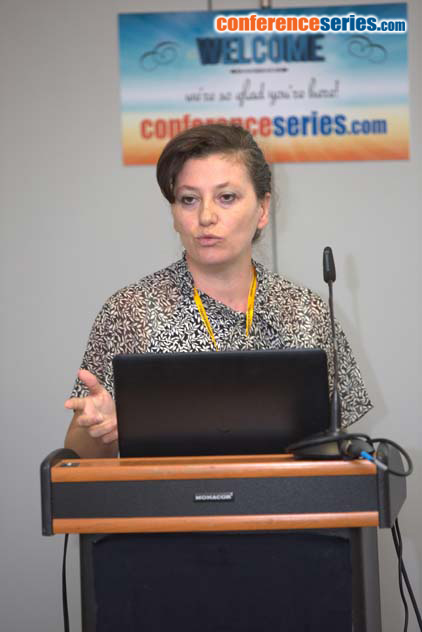
Biography
Biography: Sule Erten Ela
Abstract
Among fullerene derivatives, PCBM offers the advantages of good solubility in organic solvents (chloroform, chlorobenzene, dichlorobenzene, etc.), higher electron mobility and higher electron affinity. However, weak absorption in the visible region and low lying LUMO level are the weak points. Weak absorption of PCBM limits the light harvesting in photovoltaic conversion and low LUMO level of the acceptor result in lower open circuit voltage (Voc) in PSCs, since Voc is strongly related to the difference between the LUMO level of acceptor and the HOMO of the donor material. Therefore, it is very important to design and synthesize new soluble fullerene derivatives with stronger visible absorption and higher LUMO energy levels than PCBM. It is crucial to control the lowest unoccupied molecular orbital (LUMO) of electron accepting materials for producing efficient charge transfer in bulk heterojunction (BHJ) solar cells. Due to their high LUMO level, soluble bis-adducts of C60 are of high interest for improving the Voc in BHJ solar cells. In this work, we have developed novel fullerene derivatives for organic solar cells and perovskite solar cells. A novel bis-4-propylpentyl [6,6] methanofullerene bis-adduct, using an alkyl solubilizing group. The optoelectronic, electrochemical and photovoltaic properties of this bis-product are investigated. Perovskite heterojunction solar cells have attracted considerable attention because of their unique efficiencies. Novel fullerene bis-adduct dicarboxylic material showed good performance in perovskite solar cells. Novel benzoic acid fullerene bis-adducts pays significantly more attention for engineering perovskite heterojunction solar cells to passivate the defects on surface and grain boundaries of perovskite films. Our photovoltaic results show that benzoic acid fullerene bis-adduct compound is highly promising for the application in heterojunction perovskite solar cells because of its close solar cell efficiency to PCBM material. The carboxylic group may form hydrogen bond with I- ion in the perovskite and passivate the surface of perovskite, thus reducing the recombination. Our results show that the efficiency of reference perovskite bulk heterojunction solar cell using PCBM is higher than 1.066 times that of perovskite heterojunction solar cells using benzoic acid fullerene bis adducts. Our successful preliminary results suggested that further optimization of this novel fullerene bis- adduct can yield higher efficiencies with chemical modifications to fine tune the electronic properties.
Recent Publications
1. Erten Ela S, Villegas C, Delgado JL, Martin N (2015) Pyrrolidino [60] and [70] Fullerene Homo and Heterodimers as Electron Acceptors for OPV New Journal of Chemistry (RSC), 39:1477-1482; doi: 10.1039/C4NJ01709A.
2. Cakmak Y. Kolemen S, Buyuktemiz M, Dede Y, Erten Ela S (2015) Synthesis and dye sensitized solar cell applications of Bodipy derivatives with bis-dimethylfluorenyl amine donor groups, New Journal of Chemistry (RSC) 39:4086-4092; 2015, Doi: 10.1039/C4NJ02393E.
3. Poluektov O.G., Niklas J, Mardis KL, Beaupré S, Leclerc M, Villegas C, Erten-Ela S, Delgado JL, Martín N, Sperlich A, Dyakonov V (2014) Electronic Structure of Fullerene Heterodimer in Bulk-Heterojunction Blends, Advanced Energy Materials, 4:1031517 (1-7).
4.Kolemen S, Cakmak Y, Ozdemir T, Erten Ela S, Buyuktemiz M,Dede Y, Akkaya EU, Design and characterization of Bodipy derivatives for bulk heterojunction solar cells (2014) Tetrahedron, 36: 6229-6234, doi:10.1016/j.tet.2014.03.049
5.Erten Ela S, Chen H, Kratzer A, Hirsch A, Brabec C(2016), Perovskite solar cells fabricated using dicarboxylic fullerene derivatives , New J. Chem., 40: 2829-2834.


